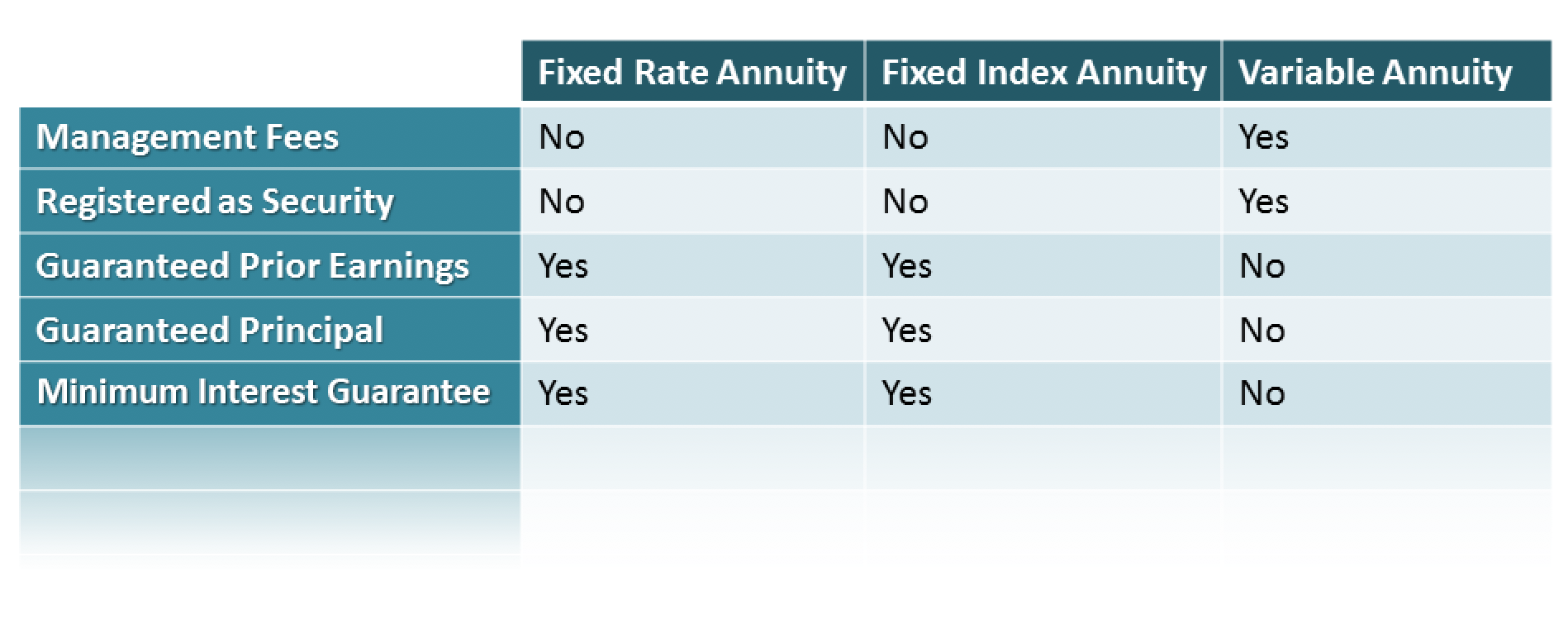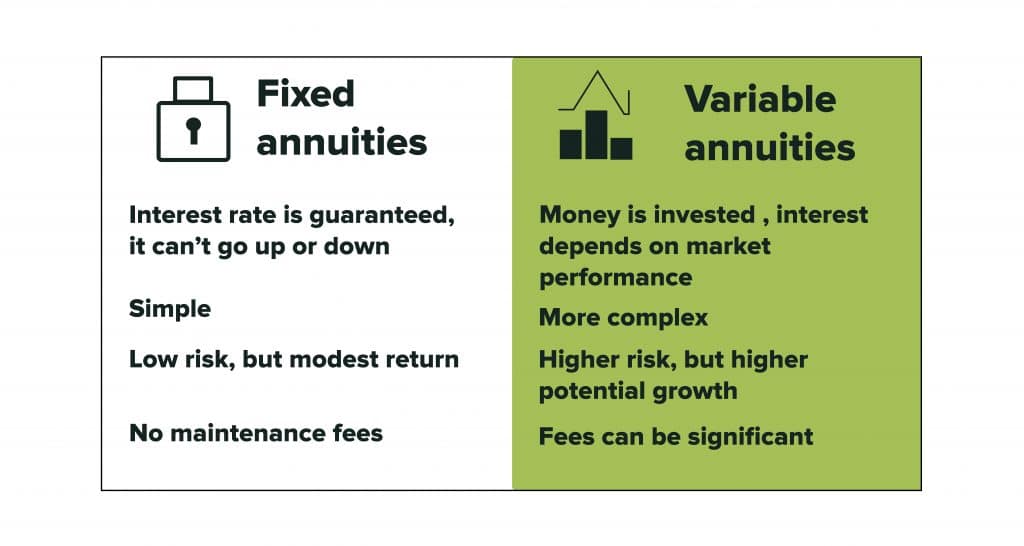All Categories
Featured
Table of Contents
Just as with a dealt with annuity, the owner of a variable annuity pays an insurer a swelling amount or collection of repayments for the assurance of a series of future repayments in return. Yet as discussed over, while a repaired annuity expands at a guaranteed, consistent price, a variable annuity expands at a variable rate that depends upon the efficiency of the underlying financial investments, called sub-accounts.

Throughout the accumulation phase, possessions spent in variable annuity sub-accounts grow on a tax-deferred basis and are exhausted just when the agreement proprietor withdraws those profits from the account. After the accumulation phase comes the income phase. With time, variable annuity assets need to theoretically boost in value until the contract owner decides he or she wish to start taking out money from the account.
The most considerable problem that variable annuities commonly existing is high cost. Variable annuities have a number of layers of fees and expenditures that can, in accumulation, produce a drag of up to 3-4% of the contract's value each year.
Understanding Fixed Interest Annuity Vs Variable Investment Annuity A Comprehensive Guide to Investment Choices What Is the Best Retirement Option? Pros and Cons of Various Financial Options Why Choosing the Right Financial Strategy Is a Smart Choice How to Compare Different Investment Plans: How It Works Key Differences Between Different Financial Strategies Understanding the Risks of Long-Term Investments Who Should Consider Fixed Vs Variable Annuity Pros And Cons? Tips for Choosing Tax Benefits Of Fixed Vs Variable Annuities FAQs About Planning Your Financial Future Common Mistakes to Avoid When Planning Your Retirement Financial Planning Simplified: Understanding Your Options A Beginner’s Guide to Fixed Annuity Or Variable Annuity A Closer Look at Annuity Fixed Vs Variable
M&E expenditure fees are calculated as a percentage of the contract worth Annuity providers pass on recordkeeping and other management costs to the agreement proprietor. This can be in the kind of a flat annual cost or a portion of the contract worth. Management fees might be consisted of as part of the M&E risk fee or may be assessed individually.
These fees can vary from 0.1% for easy funds to 1.5% or even more for proactively managed funds. Annuity agreements can be customized in a number of ways to serve the specific demands of the agreement proprietor. Some usual variable annuity riders include ensured minimum buildup advantage (GMAB), assured minimum withdrawal advantage (GMWB), and ensured minimum earnings benefit (GMIB).

Variable annuity contributions give no such tax deduction. Variable annuities tend to be very inefficient vehicles for passing wide range to the future generation due to the fact that they do not delight in a cost-basis change when the initial contract owner passes away. When the proprietor of a taxable investment account dies, the price bases of the investments kept in the account are gotten used to mirror the market prices of those investments at the time of the owner's fatality.
Highlighting Fixed Vs Variable Annuities Everything You Need to Know About Fixed Vs Variable Annuities Defining Annuity Fixed Vs Variable Advantages and Disadvantages of Different Retirement Plans Why Choosing the Right Financial Strategy Is Worth Considering How to Compare Different Investment Plans: How It Works Key Differences Between Different Financial Strategies Understanding the Rewards of Long-Term Investments Who Should Consider Strategic Financial Planning? Tips for Choosing the Best Investment Strategy FAQs About Planning Your Financial Future Common Mistakes to Avoid When Choosing Choosing Between Fixed Annuity And Variable Annuity Financial Planning Simplified: Understanding Fixed Vs Variable Annuity Pros Cons A Beginner’s Guide to Annuities Fixed Vs Variable A Closer Look at Variable Vs Fixed Annuities
Beneficiaries can acquire a taxable financial investment profile with a "tidy slate" from a tax obligation viewpoint. Such is not the instance with variable annuities. Investments held within a variable annuity do not get a cost-basis modification when the original owner of the annuity dies. This means that any type of accumulated unrealized gains will certainly be handed down to the annuity proprietor's successors, in addition to the connected tax burden.
One significant problem connected to variable annuities is the capacity for conflicts of passion that might feed on the part of annuity salesmen. Unlike a financial advisor, who has a fiduciary responsibility to make investment choices that profit the client, an insurance policy broker has no such fiduciary commitment. Annuity sales are highly rewarding for the insurance policy professionals that offer them due to the fact that of high in advance sales compensations.

Lots of variable annuity agreements include language which positions a cap on the percentage of gain that can be experienced by particular sub-accounts. These caps prevent the annuity owner from completely getting involved in a part of gains that could or else be enjoyed in years in which markets generate considerable returns. From an outsider's point of view, presumably that investors are trading a cap on investment returns for the previously mentioned guaranteed floor on investment returns.
As kept in mind over, surrender charges can seriously limit an annuity proprietor's capability to move assets out of an annuity in the very early years of the agreement. Additionally, while many variable annuities enable agreement owners to withdraw a specified amount during the buildup stage, withdrawals beyond this quantity generally cause a company-imposed cost.
Withdrawals made from a set rate of interest investment choice can also experience a "market worth change" or MVA. An MVA adjusts the value of the withdrawal to show any type of adjustments in rate of interest from the time that the money was purchased the fixed-rate option to the time that it was withdrawn.

Quite typically, also the salespeople who sell them do not totally recognize just how they work, and so salespeople sometimes prey on a purchaser's feelings to sell variable annuities rather than the merits and viability of the items themselves. Our company believe that investors ought to fully understand what they have and just how much they are paying to own it.
Decoding Fixed Vs Variable Annuity Pros And Cons Everything You Need to Know About Financial Strategies Defining Fixed Annuity Or Variable Annuity Pros and Cons of Tax Benefits Of Fixed Vs Variable Annuities Why Choosing the Right Financial Strategy Is Worth Considering Fixed Index Annuity Vs Variable Annuity: How It Works Key Differences Between Different Financial Strategies Understanding the Risks of Long-Term Investments Who Should Consider Strategic Financial Planning? Tips for Choosing the Best Investment Strategy FAQs About Fixed Interest Annuity Vs Variable Investment Annuity Common Mistakes to Avoid When Choosing Variable Annuities Vs Fixed Annuities Financial Planning Simplified: Understanding Your Options A Beginner’s Guide to Fixed Vs Variable Annuity Pros Cons A Closer Look at Fixed Annuity Vs Variable Annuity
Nonetheless, the exact same can not be claimed for variable annuity assets kept in fixed-rate financial investments. These properties legitimately belong to the insurer and would consequently be at danger if the business were to stop working. Likewise, any type of guarantees that the insurance policy business has actually consented to supply, such as a guaranteed minimum earnings advantage, would certainly remain in inquiry in case of a business failing.
For that reason, prospective buyers of variable annuities must understand and take into consideration the economic condition of the releasing insurance provider before participating in an annuity contract. While the benefits and drawbacks of various kinds of annuities can be discussed, the actual problem surrounding annuities is that of suitability. Place simply, the question is: that should own a variable annuity? This concern can be challenging to answer, given the myriad variations readily available in the variable annuity world, however there are some fundamental guidelines that can help capitalists decide whether or not annuities must play a role in their monetary plans.
Besides, as the stating goes: "Purchaser beware!" This write-up is prepared by Pekin Hardy Strauss, Inc. Investment options in variable annuities. ("Pekin Hardy," dba Pekin Hardy Strauss Wealth Monitoring) for informational functions just and is not meant as an offer or solicitation for organization. The details and information in this short article does not comprise lawful, tax obligation, audit, financial investment, or other specialist suggestions
Table of Contents
Latest Posts
Highlighting the Key Features of Long-Term Investments Key Insights on Fixed Index Annuity Vs Variable Annuity What Is Annuity Fixed Vs Variable? Advantages and Disadvantages of Different Retirement P
Exploring the Basics of Retirement Options A Closer Look at How Retirement Planning Works Defining Variable Annuity Vs Fixed Indexed Annuity Features of Annuity Fixed Vs Variable Why Choosing the Righ
Understanding Financial Strategies Everything You Need to Know About Financial Strategies What Is Annuities Fixed Vs Variable? Features of Smart Investment Choices Why Choosing the Right Financial Str
More
Latest Posts